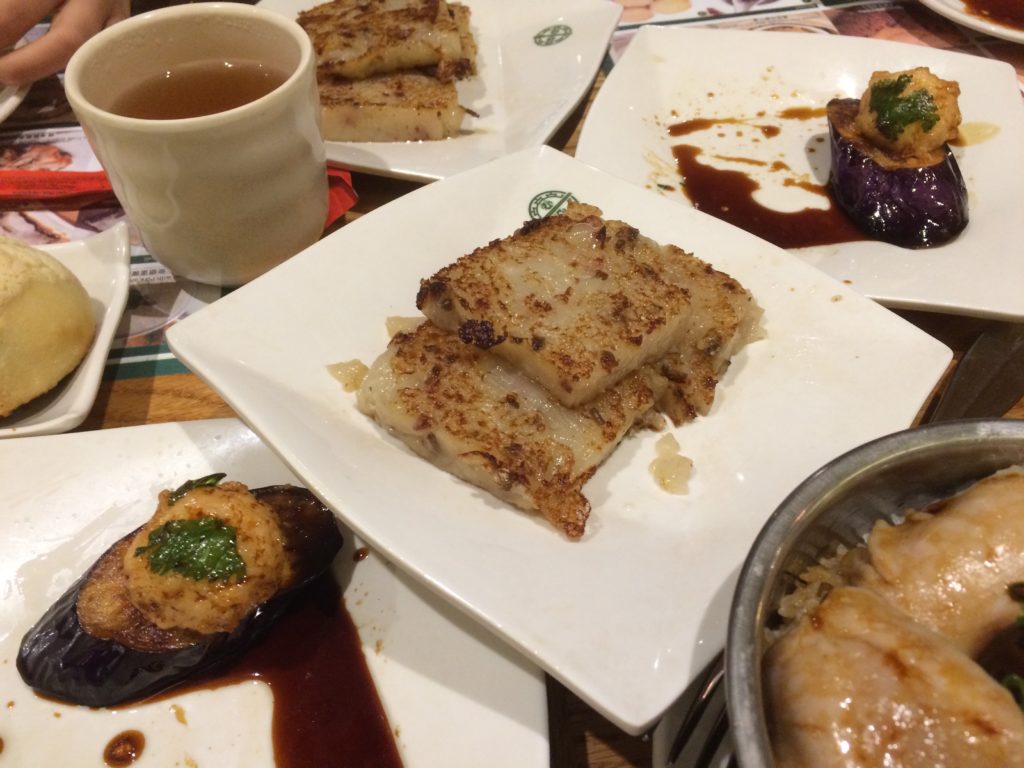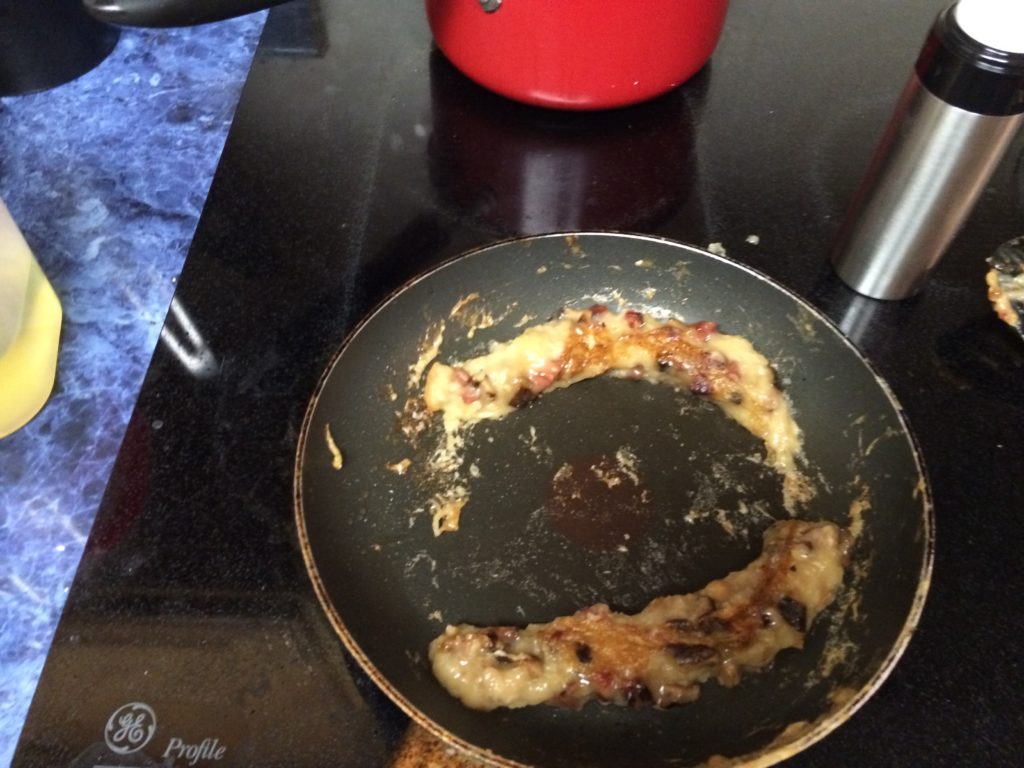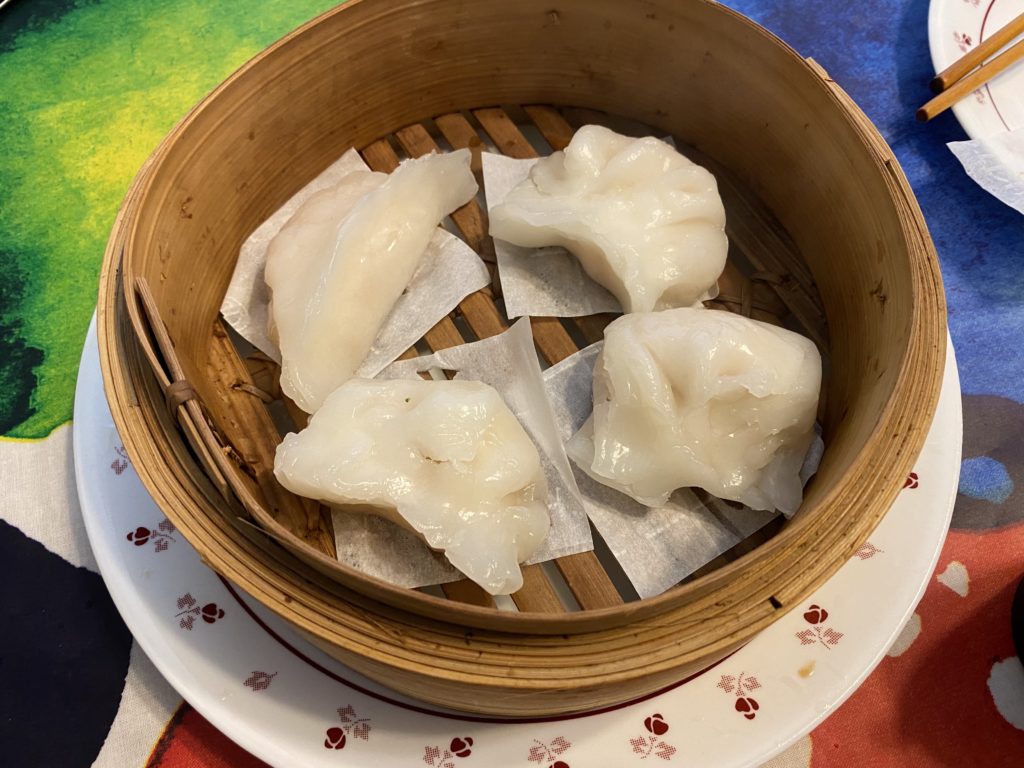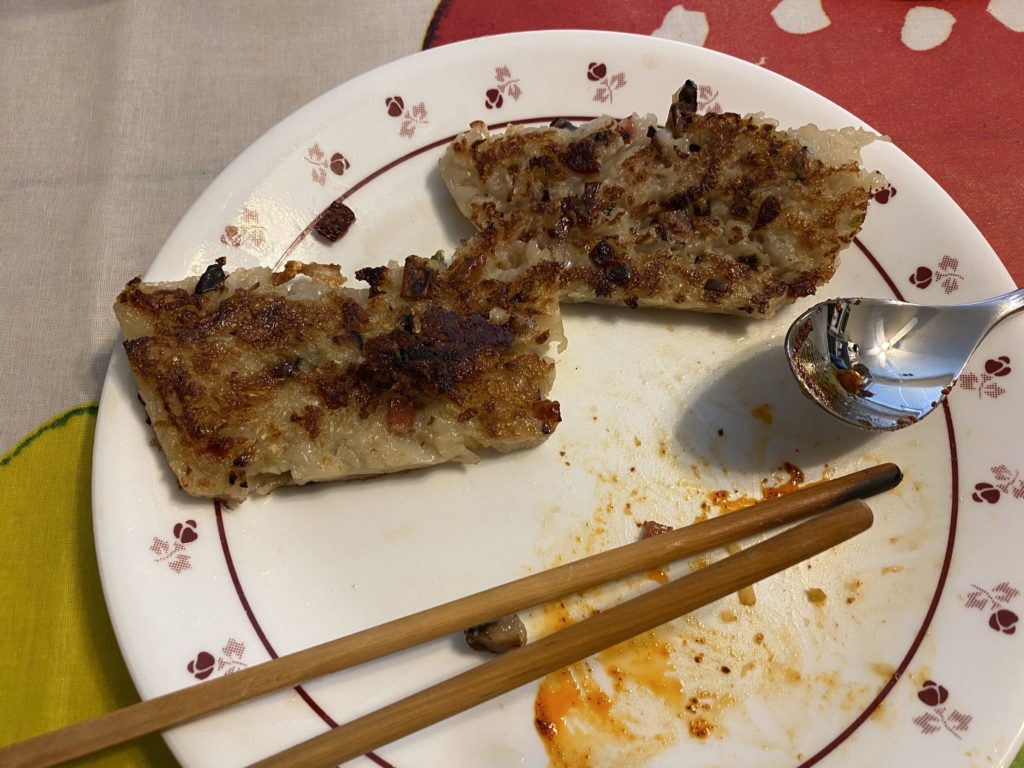Some people claim to have “dessert stomachs” where they can always find room for cake or ice cream even after a meal. I, on the other hand, have a “dim sum stomach”. At most meals, I usually eat about as much as other people. However, as the steamer trays fill the table, my appetite and eyes both grow wide, and I can pack away dishes well after others have stopped.

Some of my earliest memories include dim sum. My family would go out for dim sum with my grandpa and uncle on the weekend, and I would nibble at dishes while playing at the table. My mom brought juice boxes for me and my sisters since we didn’t like tea. I would marvel at how the waitstaff would bundle up all of the dishes into the disposable plastic tablecloth at the end of the meal. They would push all of the dishes to the middle, then bring the corners together above the table. Using the chopsticks as a little handle (like a bindle), they carried it back to the kitchen and leave a clean table ready to be set again.
And despite my more recent interest in cooking, I really never tried making either dim sum or Chinese bakery items. My mom told me it was hard and takes a lot of work, and in my early attempts, she was right. When I made BBQ pork buns, they tasted fine, but it took a few hours, only made a handful, and weren’t very well filled. Julie and I made pineapple custard buns, but we managed to both burn the bottoms and have the custard melt into the breading.
A few years ago, I felt like I had enough practice cooking to try again. This time, instead of another bun, I tried to make another favorite: turnip cake. They’re made by shredding and cooking down daikon, mixing it with rice flour, steaming it to set it, then slicing and pan frying squares to give it a crispy edge.
Here’s what it’s supposed to look like.

Here’s what ours looked like

You may notice a slight difference in texture. Whereas a true turnip cake sets and has a clear, sliceable shape, our turnip cake remained a gloopy mess and had the consistency of melted cheese.
It took five years to get over that experience and a pandemic to leave me bored enough at home to take another shot at making dim sum. Without a plan for a Saturday, I suggested over breakfast that we try to make shrimp dumplings. I always wondered how they made those translucent, chewy wrappers and figured we could give it a shot ourselves.
We recently have cooked several recipes from from the Woks of Life blog. The authors clearly ate the same cuisine as I did because everything tastes like I imagine. For my birthday, Julie got me a steamer stand and lid for the wok to make steamed fish. That morning, we found a shrimp dumpling recipe and discovered the secret ingredient: wheat starch.
What is wheat starch? Isn’t that just flour? Apparently not. Is it the same thing as the vital wheat gluten that we put into bread machine bread recipes? I have no idea. Regardless, I found it at 99 Ranch and have a bag in the back of my cupboard now.
Since we were already making a dim sum item, Julie suggested we try the turnip cake again. I was hesitant, but the Woks of Life did have another recipe, and they hadn’t disappointed yet. From our cupboard, I grabbed the bag of leftover rice flour to see if we had enough.
Julie looked at the bag and asked me, “This says glutinous rice flour. Is that the same as rice flour?”
No, no it is not.
Glutinous rice flour makes delicious mochi, which is soft and goopy. Turnip cake is supposed to set into firm, sliceable, friable pieces. So we got non glutinous rice flour from 99 Ranch, too.
That’s basically the story. We spent a few hours that morning making the recipes, and they worked.

It wasn’t perfect. The skin on the shrimp dumplings wasn’t as stretchy as I would have liked. However, I will try again: other recipes online had very different ratios of wheat starch to tapioca starch, so maybe the consistency will change, too.

The turnip cake also worked. We liked adding more sausage and dried shrimp than what stingy restaurants put in. The recipes made enough for another meal the following morning.
So is it worth making dim sum from scratch? It depends, not only person-to-person but also what I want out of my dim sum.
Part of joy of dim sum is the cultural experience. The whole experience includes old Chinese ladies yelling at me while pushing carts. But even when I just pick it up from a counter and speak English to the staff, I do feel the tug of my Chinese heritage being in that environment. Also, dim sum is the tapas experience: the joy is getting lots of small bites of a variety of things. And for the time it takes to make them, it’s pretty cheap.
And it doesn’t make much sense by economics or even by taste. Especially including my time, it’s far more expensive than buying food. And with dim sum, the best I can aspire to is as good as restaurants. I actually don’t want to make a better shrimp dumpling: just like the perfect Oreo is just an Oreo, I want a restaurant quality shrimp dumpling.
But making dim sum is about doing it. It’s about starting with a counter full of raw ingredients and seeing something created by the end. I think the previous turnip cake failure is what made this experience such a triumph and gives me appreciation for restaurants cranking out these dishes so efficiently and consistently.
So yeah, making dim sum is hard and takes a lot of work. I think that’s why it was worth doing.
One reply on “Making Dim Sum from Scratch”
I would love to be on your email list. my kids (adults now) grew up in Seattle eating authentic Chinese cuisine in Seattle and Vancouver. we are in Florida now where we gave up entirely on Chinese for years. finally found a place in Tampa called Yummy House where the dim sum is not bad.